What to do if Siemens SITRANS FC330 reports a failure?
- GGary NormanAug 19, 2025
If the Siemens Measuring Instruments device indicates 'Failure' due to a fault in the field device or peripherals, immediate maintenance is required.
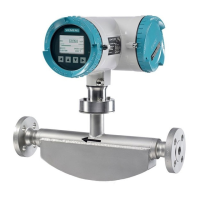
What to do if Siemens SITRANS FC330 reports a failure?
If the Siemens Measuring Instruments device indicates 'Failure' due to a fault in the field device or peripherals, immediate maintenance is required.
What to do if Siemens Measuring Instruments is out of specification?
If the Siemens Measuring Instruments device shows 'Out of specification', check the ambient temperature or process conditions. If possible, install the device at a different location. This is likely caused by deviations from permissible ambient or process conditions detected by the device, leading to unreliable measurements or actuator deviations.
What to do if Siemens SITRANS FC330 says maintenance is required?
If the Siemens Measuring Instruments device indicates 'Maintenance required' and the output signal is still valid, but wear reserve is almost exhausted or a function will be limited soon, maintenance is strongly recommended as soon as possible.
How to fix process value tolerance on Siemens Measuring Instruments?
If the Siemens Measuring Instruments device displays 'Process value tolerance' issues, verify that the limit parameter settings are suitable for the application. This occurs when at least one process value has exceeded or fallen below a process tolerance limit parameter set in the device.
How to reset configuration changed on Siemens Measuring Instruments?
If the Siemens Measuring Instruments device's configuration has changed due to a work process, reset the configuration flag to clear the diagnostic message.
What to do if Siemens SITRANS FC330 data logging memory is full?
If the Siemens Measuring Instruments device shows 'Data logging memory full', save the logged data and free up memory space on the SensorFlash.
What to do if Siemens SITRANS FC330 shows function check?
If the Siemens Measuring Instruments device shows 'Function check' because the output signal is temporarily invalid (e.g., frozen) due to work being performed on the device, disable manual mode via HMI or the engineering system.
How to fix high transmitter temperature on Siemens SITRANS FC330?
If the Siemens Measuring Instruments device indicates 'Transmitter electronics temperature too high', decrease the ambient temperature. If possible, reposition the device in a different location and inspect it for heat-related damages.
How to fix low transmitter temperature on Siemens SITRANS FC330 Measuring Instruments?
If the Siemens Measuring Instruments device indicates 'Transmitter electronics temperature too low', increase the ambient temperature. If possible, reposition the device in a different location and inspect it for cold-related damages.
How to fix sensor signal disrupted on Siemens SITRANS FC330 Measuring Instruments?
If the Siemens Measuring Instruments device shows 'Sensor signal disrupted', turn off the power, unplug and reconnect the sensor cable. If the error still exists, contact your local Siemens representative.
| Type | Coriolis mass flow meter |
|---|---|
| Measurement Principle | Coriolis |
| Power Supply | 24 V DC |
| Protection Class | IP67 |
| Material | Stainless steel |
| Accuracy | ±0.1% of reading |
| Repeatability | ±0.05% of reading |
| Process Temperature | -50°C to +200°C |
| Output Signals | 4-20 mA, pulse, frequency |
| Communication Protocol | HART, PROFIBUS, Modbus |
| Approvals | ATEX, IECEx |
Provides information required to commission and use the device, intended for installation and maintenance personnel.
Details major changes in documentation compared to previous editions, including updated chapters and overall revisions.
Emphasizes observing instructions and safety specifications for safe operation and maintaining device integrity.
Highlights the need to observe country-specific safety rules, provisions, and laws for connection, assembly, and operation.
Covers special conditions for safe use in hazardous environments, including installation requirements and temperature specifications.
Introduces SITRANS Coriolis flowmeter systems, detailing transmitter and sensor combinations and measurement tasks.
Explains the flowmeter's design, covering compact and remote versions, sensor design, and transmitter design.
Details the three types of nameplates on the FC330 Coriolis flowmeter for product identification and specifications.
Describes device approvals for general purpose and hazardous areas, advising to check nameplates for confirmation.
Lists key features of the flowmeter, including communication protocols, display, measurement capabilities, and totalizer control.
Outlines the main applications of the Coriolis flowmeter across various industries like Chemical, Food & Beverage, and Automotive.
Provides essential safety notes for installation, covering wetted parts, connecting parts, operating pressure, and cable protection.
Specifies requirements for installation locations, including enclosure ratings, process conditions, and aggressive atmospheres.
Details correct mounting procedures, emphasizing tightness at process connections and secure closure of the device.
Guides through transmitter installation, including remote field mount, wall mount housing, and turning the transmitter/display.
Covers critical safety aspects for connecting the device, including cable glands, conduit systems, and hazardous contact voltage.
Describes how to wire the device, covering cable requirements and detailed connection steps for DSL, HART, Modbus, and Profibus.
Details safety precautions for commissioning, including toxic media, hazardous areas, errors, hot surfaces, and dust protection.
Lists requirements to be checked before commissioning, ensuring proper installation, connection, and hazardous area compliance.
Explains local commissioning using the HMI, covering local display operation, wizards, initial startup, and zero point adjustment.
Describes remote commissioning using SIMATIC PDM, including software overview and configuration procedures.
Details local operation via the HMI, including keypad calibration, display structure, navigation, and parameter editing.
Explains access levels (Read Only, User, Expert), PIN codes, and auto-logout functions for device security.
Describes the operation view, including types of views like measurement, operating, alarm, and diagnostic views.
Illustrates different measurement view types: single value, three values, one value and bargraph, and six values.
Defines ranges for scaling settings and default values for process values like mass flow, density, and temperature.
Details various functions including process values, limits, hysteresis, low flow cut-off, empty tube monitoring, and noise damping.
Explains hardware and software configuration of inputs and outputs, detailing current, relay, and digital configurations.
Describes the three independent totalizers for mass, volume, and fraction flow, including fail-safe modes and operation.
Covers dosing function, including valve control (discrete/analog), recipes, fault handling, and compensation.
Provides safety notes for service and maintenance, including dust layers, leaks, and computer use in hazardous areas.
Explains recalibration services offered by Siemens, including standard and density calibration options.
Details how to clean the enclosure using mild detergents, avoiding aggressive agents to protect surfaces and inscriptions.
Outlines maintenance requirements, emphasizes authorized personnel, and warns against impermissible repairs.
Explains device status symbols, alarm formats (Siemens standard, NAMUR), and priority conflicts.
Lists fault codes (IDs) for sensor and transmitter diagnostics, providing messages, causes, and corrective actions.
Covers troubleshooting for operation issues like copying setup, firmware updates, and sensor-related problems.
Specifies power supply details, including voltage ranges, environmental conditions, and galvanic isolation.
Details reference conditions for flow calibrations, including medium, temperature, pressure, density, and orientation.
Describes interface specifications for Modbus, HART, and Profibus communication protocols.
Details digital input specifications for channels 3 and 4, covering load and functionality like start/stop dosing and resets.
Specifies output details for current, digital, and relay outputs, including signal range, resolution, and fail-safe modes.
Covers construction aspects like designated use, system design, transmitter dimensions, and installation torques.
Lists basic operating conditions, including ambient temperature, climate class, altitude, and EMC performance.
Defines primary and derived process variables measured by the flowmeter, such as mass flow, density, and volume flow.
Details bus communication protocols like HART, Modbus, and Profibus, including device IDs and layer support.
Lists certifications and approvals for transmitters and systems, including ATEX, IECEx, FM/CSA, and hygienic versions.
Explains the Pressure Equipment Directive (PED) and fluid group classifications based on danger potential.
Details pressure-temperature ratings for stainless steel and nickel alloy sensors based on flange standards.
Provides basic dimensions (A, B, C) and weight for different sensor DN sizes.
Lists sensor sizes and flange connection dimensions for 316L stainless steel standard sensors.
Provides sensor sizes and flange connection dimensions for polished hygienic versions of 316L stainless steel.
Details sensor sizes and flange connection dimensions for Nickel-Alloy C4 and AISI 316L sensors.
Shows compact and remote transmitter dimensions in mm.
Provides dimensions for the wall mount housing, including weight.
Shows dimensions for the mounting bracket used for compact housings.
Explains the Coriolis principle of measurement, including sensor operation and calculation of process variables.
Details default settings for mass flow, standard volume flow, volume flow, fraction, and zero point adjustment based on sensor dimension.
Describes HART functionality, communication protocols, and integration with tools like PDM and AMS.
Presents the main HMI menu structure, outlining levels 1 and 2 with corresponding names and information.
Details the HMI menu structure for sensor-related settings, including flow direction, noise damping, and zero point adjustment.
Outlines the HMI menu for process values, covering mass flow, volume flow, standard volume flow, density, and temperature.
Details the HMI menu for totalizers, covering settings for totalizer 1, 2, and 3, including units and alarm limits.
Explains the HMI menu for inputs and outputs, detailing configurations for channels 1 through 4.
Provides the HMI menu structure for dosing control, covering dosing mode, recipes, and fault handling.
Details the HMI menu for setting the current date and time.
Outlines the HMI menu for local display settings, including brightness, contrast, and view configurations.
Details the HMI menu for device identification, covering transmitter, local display, I/O electronics, and sensor information.
Presents the HMI menu for diagnostic events, including enabling alarms and alarm class assignments.
Details the HMI menu for maintenance functions like copy configuration, spare part replacement, and operating time.
Outlines the HMI menu for diagnostics, covering sensor, temperature, DSL, and frame temperature monitoring.
Details the HMI menu for peak values, allowing configuration of process values for minimum, maximum, and reset.
Covers HMI menu items related to SIL variant, customer transfer, and transmitter characteristics like composition.
Explains the HMI menu for SensorFlash functions, including eject, installation, capacity, data logging, and advanced logging.
Details the HMI menu for simulation, covering input/outputs and process values like mass flow and density.
Describes the HMI menu for self-test functions, specifically the display test.
Outlines the HMI menu for resets, including factory reset and device restart options.
Details the HMI menu for firmware updates.
Covers HMI menu items for communication, including USB (service channel) and HART settings.
Details HMI menu items for security, such as changing user PIN, PIN recovery, and auto logout.
Lists preconditions for zero point adjustment, including pipe flushing, filling, and stable temperature.
Explains the automatic zero point adjustment function and its parameters like duration and start.
Details the calculation of the zero point offset value and standard deviation based on flow samples.
Describes how to perform manual zero point adjustment by entering the offset value when automatic adjustment is not possible.
Provides information on finding certificates online and on the included DVD, including calibration and conformance certificates.
Explains the QR code label on the device and its use for accessing device-specific information via smartphone.
Provides contact information for technical support, including support requests and general information on technical support.

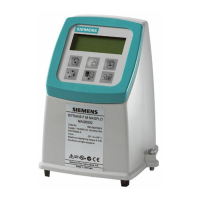
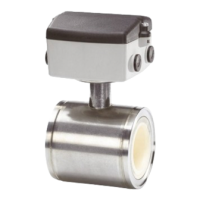
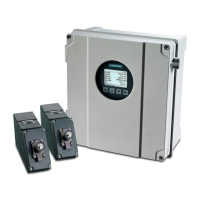


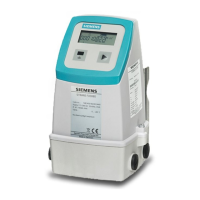


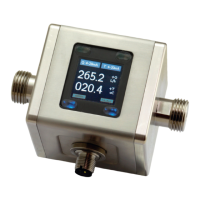
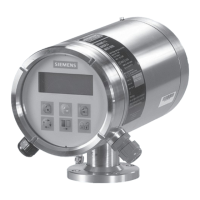
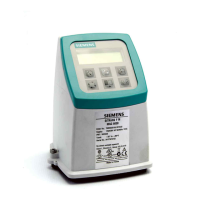
